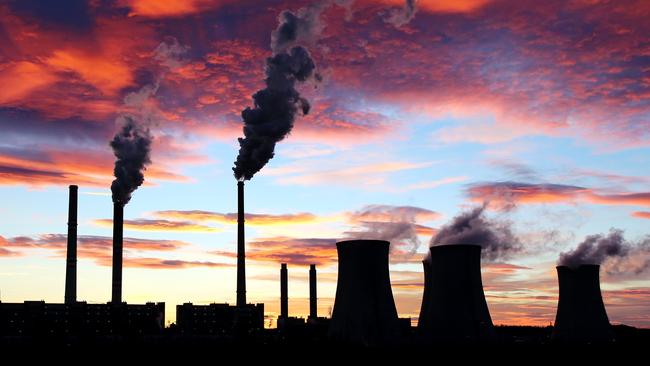One-size-fits-all climate plan ‘handicaps miners’
Mining, chemical, transport and energy companies warn they could be left behind by international competitors.

Mining, chemical, transport and energy companies – which run 97 of the 215 biggest emitting facilities in the nation – have warned Labor against adopting a “one size fits all” safeguard mechanism amid concerns that they could be left behind by international competitors.
Climate change action across trade-exposed and energy-intensive sectors, which underpins Labor’s 2030 plan to slash emissions by 43 per cent, is expected to take some industries longer as they electrify operations and adopt new low-emissions technologies.
Anthony Albanese’s Powering Australia plan will lower baseline emissions thresholds under the Clean Energy Regulator’s safeguard mechanism, applying to companies and facilities with scope-1 emissions above 100,000 tonnes of carbon dioxide equivalent a year.
The energy crisis has pushed out timelines for the Albanese government’s changes to the safeguard mechanism but industry leaders expect the new regime to be finalised by the end of the year.

Impacted industries want the government to expand access for companies to international carbon credits to offset emissions. Minerals Council of Australia chief executive Tania Constable, who represents companies including BHP, Rio Tinto, Aurizon, Orica, Peabody Energy and Anglo Coal, said the final design cannot be “one size fits all”.
“Lowering baselines over time is going to occur but you’ve got to have all the right measures in place for that to occur so you’re not unduly impacting emissions-intensive, trade-exposed industries along the way,” Ms Constable said.
“How is this going to work in practice? Is it going to work at facility level? Is it going to work at company level? It can’t be a one size fits all – it needs to take into account each sector and each individual company will be impacted in different ways. Looking at it facility by facility and taking time to avoid unintended consequences will be critical.”
Ms Constable said MCA members were not “scared of targets” and were working “very constructively” with senior government figures, including Resources Minister Madeleine King and Energy Minister Chris Bowen.
Ms Constable said sensible “timing and trajectory” would ensure coal, gold, iron ore, transport, chemicals and energy companies remained globally competitive. “You can’t just consider that every sector is going to be able to reduce their emissions overnight or within a short period of time,” she said.
“There will need to be different considerations depending on the type of industry that we’re looking at. Every industry has their own pathway. Our industry as a whole, who are primarily export industries, rely very heavily in the long term for our industries to electrify.
“That takes an enormous amount of effort to turn our fleets and mine sites into sites that are fully electrified. It’s not as if they’re sitting next door to the national electricity market power grid system.”
Mining giants BHP and Rio Tinto have adopted ambitious climate change targets and will lead the pack in unlocking new technologies for smaller companies.
The industry is also pursuing low-emissions technologies including carbon capture and storage, methane capture, automated green vehicles and battery storage.
Labor’s Powering Australia blueprint said changes to the safeguard mechanism, based on a Business Council of Australia recommendation, would deliver 213Mt of greenhouse gas emissions reductions by 2030.
The RepuTex Energy modelling said “investment in industry abatement is estimated to create 1600 jobs by 2030, with five out of six of these jobs created in regional areas”.
Ms Constable said offsetting emissions via international carbon credits would be crucial because the domestic carbon credits system didn’t have a “deep liquid market”. With mining companies reliant on affordable, reliable electricity, she said coal exporters were “making available” whatever they could to help get through the energy crisis.
“We have seen it as a generator issue and not a coalminer issue.
“We are the largest consumer of energy and important suppliers of energy and raw materials. We’ve a strong interest in making sure we’ve got secure, competitive and reliable energy that also reduces our emissions profile.”




To join the conversation, please log in. Don't have an account? Register
Join the conversation, you are commenting as Logout